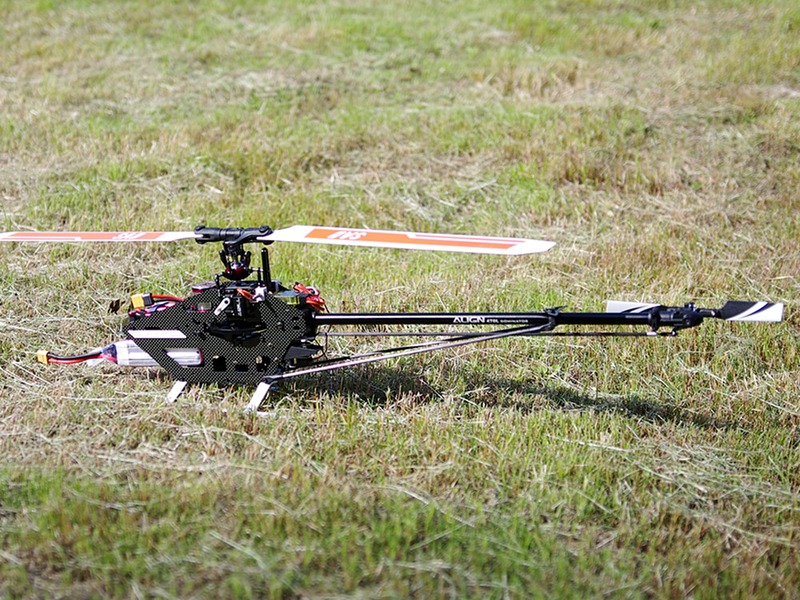Can you escape a helicopter crash?

The short answer to the question of whether you can escape a helicopter crash is yes, but it depends on the circumstances. Helicopter crashes can be caused by a variety of factors, including mechanical failure, pilot error, and bad weather. Depending on the cause of the crash and the type of helicopter, there may be ways to increase the chances of survival.
In the event of a mechanical failure, the pilot may be able to take evasive action to avoid a crash. This could include attempting to land the helicopter in a safe area, such as a field or a body of water. If the pilot is unable to land the helicopter safely, they may be able to reduce the impact of the crash by reducing the speed of the aircraft. This could be accomplished by reducing the throttle, lowering the collective, or using the autorotation feature.
If the crash is caused by pilot error, the pilot may be able to take corrective action to avoid the crash. This could include increasing the altitude, changing the direction of the aircraft, or reducing the speed. If these measures are not successful, the pilot may be able to reduce the impact of the crash by using the aircraft’s emergency systems, such as an airbag or a parachute.
In the event of bad weather, the pilot may be able to take evasive action to avoid the crash. This could include increasing the altitude, changing the direction of the aircraft, or reducing the speed. If these measures are not successful, the pilot may be able to reduce the impact of the crash by using the aircraft’s emergency systems, such as an airbag or a parachute.
In some cases, it may be possible to escape a helicopter crash. If the aircraft is equipped with an emergency exit, the passengers may be able to exit the aircraft before it crashes. If the aircraft is not equipped with an emergency exit, the passengers may be able to escape through a broken window or by cutting a hole in the side of the aircraft.
In conclusion, it is possible to escape a helicopter crash, but it depends on the circumstances. The pilot may be able to take evasive action to avoid the crash, or they may be able to reduce the impact of the crash by using the aircraft’s emergency systems. In some cases, the passengers may be able to escape through an emergency exit or by cutting a hole in the side of the aircraft.
Comments / Question
2. Mechanical failure
3. Weather conditions
4. Poor maintenance
5. Bird strikes
6. Fuel exhaustion
7. Inadequate training
8. Collision with terrain or objects
9. Loss of control
10. Inadequate pre-flight planning
2. Wear a helmet: Wearing a helmet can help protect your head from impact and debris.
3. Follow emergency procedures: Make sure to familiarize yourself with the emergency procedures for the helicopter you are flying in. Knowing what to do in an emergency can help you stay calm and increase your chances of survival.
4. Avoid flying in bad weather: Flying in bad weather can increase the chances of a crash. If possible, avoid flying in bad weather conditions.
5. Choose a safe landing spot: If you are in a situation where you need to make an emergency landing, try to choose a safe landing spot. Look for an area with flat terrain and no obstacles.
6. Stay low: If you are in a situation where you need to make an emergency landing, try to stay as low as possible. This will help reduce the impact of the crash.
2. Familiarize yourself with the safety features of the aircraft.
3. Listen to the safety briefing and follow the instructions given by the flight attendants.
4. Choose a seat near an exit and pay attention to the exit locations during the safety briefing.
5. Keep your seatbelt fastened during the entire flight.
6. Follow the instructions of the flight crew during an emergency.
7. Remain calm and don’t panic.
8. Put on your oxygen mask first before helping others.
9. Keep your head down and brace for impact.
10. Stay in your seat until the aircraft comes to a complete stop.
2. Practice emergency drills regularly.
3. Wear a helmet and other protective gear.
4. Make sure the helicopter is properly maintained and inspected.
5. Ensure that all passengers are briefed on emergency procedures.
6. Fly at a safe altitude and speed.
7. Avoid flying in bad weather or over terrain that could be hazardous.
8. Stay alert and aware of the surroundings.
9. Have an escape plan in case of an emergency.
10. Have a first aid kit on board.
2. Utilize the crashworthy design of the helicopter and its energy absorbing systems.
3. Use an approved, FAA-certified, crashworthy helicopter.
4. Install crashworthy seats and restraints.
5. Wear a helmet and other PPE (Personal Protective Equipment) such as a fire-resistant flight suit.
6. Occupy the most crashworthy seat in the aircraft.
7. Remain conscious and aware of the surroundings.
8. Be prepared to abandon the helicopter and escape as quickly as possible in the event of a crash.
9. Utilize Emergency Position Indicating Radio Beacons (EPIRBs) and distress signals.
10. Have a comprehensive pre-flight checklist to ensure that the helicopter is in optimal condition for flying.

